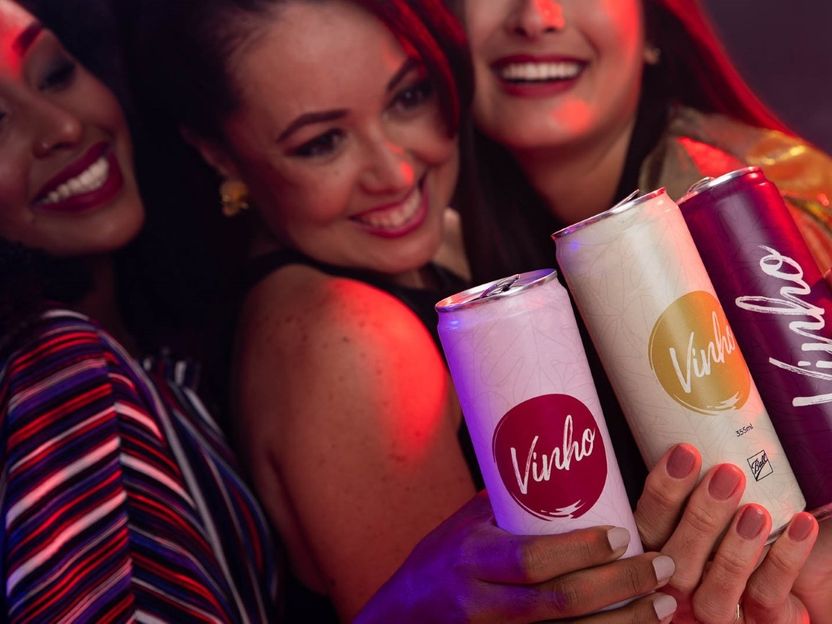Wine for young target groups - the beverage can as an opportunity
New study highlights potential of canned wine for generations Y and Z
Advertisement
The beverage can has experienced a boom in recent years - not least because of its good circulation properties. Beers, soft drinks and energy drinks are by far the most important beverage categories in cans, but the younger generations in particular are showing themselves to be open to new things: according to a recent consumer survey commissioned by beverage can manufacturer Ball Corporation, around half of 18 to 34-year-olds in Germany have already tried wine in cans or are planning to do so in the course of the next twelve months. Among respondents aged 18 to 24, the greatest interest is in rosé in cans (32%), while 25- to 34-year-olds find the combination of beverage can and sparkling wines most attractive (35%). Interestingly, the preferences of women and men hardly differ. For older population groups, wine in a can is less interesting. The representative survey among 1000 adults was conducted in June 2021 by the market research company Norstat.

Ball Corp.
The results of the current study show that young consumers are interested in new approaches in the marketing of wines. Currently, many wines do not reach Gen Y and Z because traditional wine enjoyment only increases with age: In 2017, a study about the consumption behavior of German wine drinkers showed that more than half of the 16 to 29 year-olds do not drink wine at all. 30 percent allow themselves a glass of wine less often than once a month and only 17 percent said they drink wine at least once a month. For comparison: Among the 50 to 65 year-olds, this percentage is at 43 percent.1
Stuart Pigott, one of the best-known wine critics in Germany, also believes that new concepts - such as wines in creatively designed beverage cans - can provide a breath of fresh air on the market and open up the segment to younger groups: "This age group is more interested in comfort and coolness than in conceit - and thus opens the door to alternative marketing and packaging methods," the expert wrote in a market commentary on the occasion of ProWein 2019.2
The finding that wine is more of a social drink for the under-30 group, drunk when visiting friends and relatives (23%) or as part of an event (15%), also pays into this. Older consumers not only drink more wine overall, they also drink significantly more often at home - on average around every second glass. By contrast, only a third of 16 to 29 year olds drink wine at home.1 Beverage cans benefit from the fact that they are particularly light, handy, shard-free and therefore ideal for on-the-go. This was also confirmed in the current study: Around a third of 18- to 34-year-old respondents believe that aluminum cans are the most practical disposable packaging for outdoor events such as concerts and festivals.
"Wine in cans is already a strong trend in many countries such as the US, Spain, Chile and Brazil," says Dr Mandy Glew, VP, Commercial, Ball Beverage Packaging, EMEA. "Cans are practical and offer almost endless design possibilities. That's important because the new generation of wine drinkers wants more visually appealing packaging. But also technologically, cans are a great fit for the wines preferred by the young target group. Young, sparkling and easy-to-drink wines that are drinkable but still of the best quality."
1 Szolnoki, Gergely & Mueller Loose, Simone. (2017). A question of age - German wine drinkers and their consumption behaviour with a focus on the younger generation. BIO Web of Conferences. 9. 03016. 10.1051/bioconf/20170903016.
2 Source: https://www.prowein.de/cgi-bin/md_prowein/lib/all/lob/return_download.cgi/PW_FA_03_Dosenwein_DE_final.pdf?ticket=g_u_e_s_t&bid=6296&no_mime_type=0
Note: This article has been translated using a computer system without human intervention. LUMITOS offers these automatic translations to present a wider range of current news. Since this article has been translated with automatic translation, it is possible that it contains errors in vocabulary, syntax or grammar. The original article in German can be found here.


































































